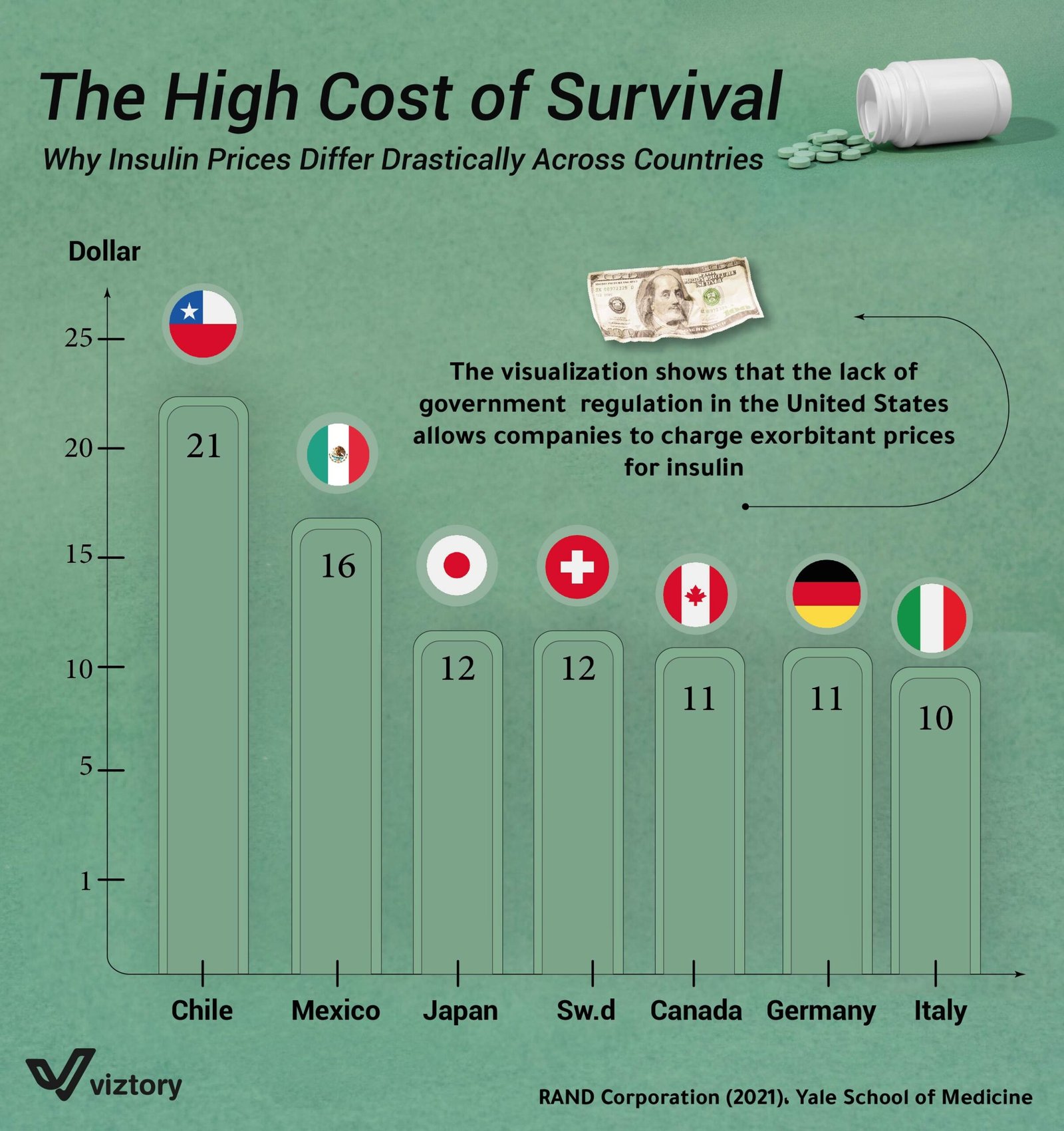Global Insulin Price Disparities
-
Aug, Fri, 2024
Global Insulin Price Disparities: How the Lack of Government Regulation Impacts Healthcare Systems
The Visualization illustrates the substantial differences in insulin prices across various countries, emphasizing the broader implications for healthcare systems worldwide. The infographic reveals that Chile has the highest insulin price at $21 per unit, followed by Mexico at $16. Japan, Switzerland, Canada, Germany, and Italy have lower insulin prices ranging between $10 and $12 per unit.
The key message conveyed is that the lack of government regulation in the United States allows companies to charge exorbitant prices for insulin, contrasting with countries where more robust governmental oversight helps keep prices in check. This situation has profound implications for healthcare, especially in the context of chronic diseases like diabetes, which require lifelong medication.
High insulin prices can lead to financial strain for individuals, limiting access to this life-saving drug, especially among low-income populations. In countries with unregulated prices, the cost burden may lead to poorer health outcomes as patients may ration their insulin, skip doses, or forgo treatment altogether. This situation also exacerbates health inequities, as those without adequate insurance or financial resources are disproportionately affected.
In contrast, countries with regulated drug prices, as seen in Japan, Switzerland, Canada, Germany, and Italy, offer more affordable insulin. This not only improves access to essential medications but also supports better overall public health outcomes. By controlling drug prices, these countries mitigate the financial burden on individuals and the healthcare system, ensuring that patients receive the necessary treatment without excessive cost barriers.
In the broader context of healthcare, the insulin pricing issue underscores the importance of government intervention and regulation in the pharmaceutical industry. Effective regulation can protect public health by ensuring that life-saving medications are affordable and accessible to all, regardless of economic status. It also highlights the need for systemic reforms in countries where high drug prices persist, to create a more equitable healthcare system that prioritizes patient welfare over corporate profits.
Ultimately, this visualization serves as a powerful reminder of the disparities in healthcare systems around the world and the critical role of government policies in shaping access to essential medications like insulin.

